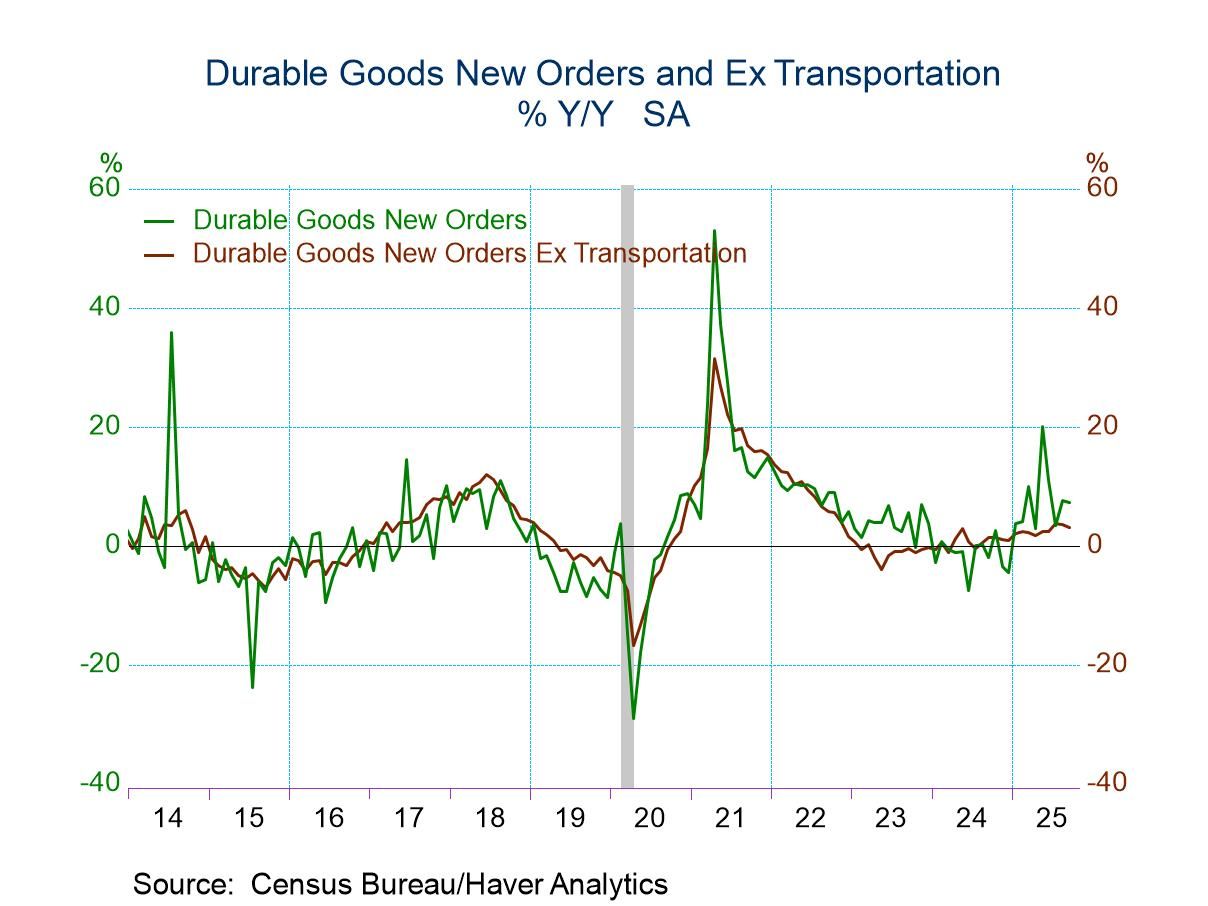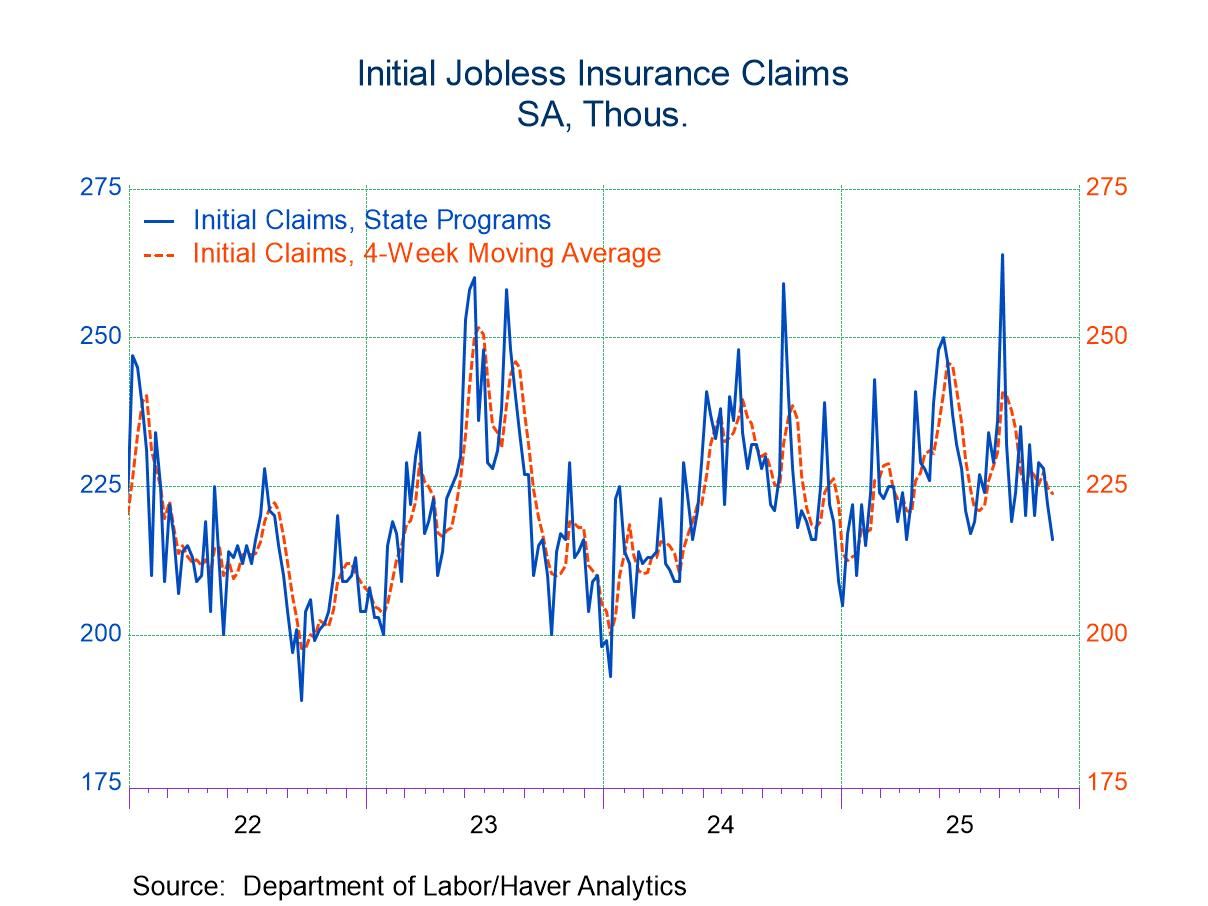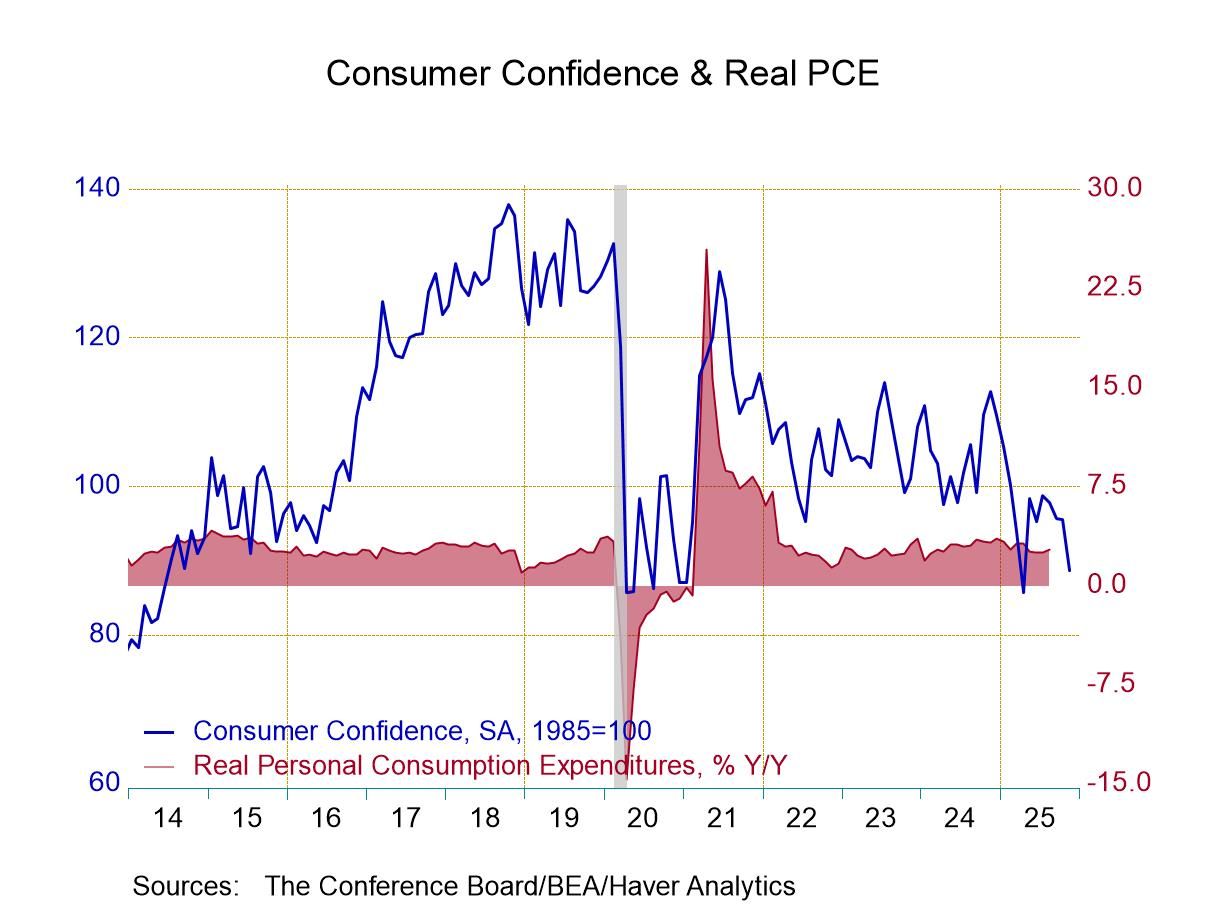U.S. Current Account Deficit Smallest Since Mid-2021
Summary
- Goods trade has larger deficit in Q2, while services surplus also increases.
- Both primary and secondary income inflows increase.
- Financial account deficit decreases markedly.


The U.S. current account deficit narrowed very slightly in Q2 2023, to $212.1 billion, seasonally adjusted, from $214.5 billion in Q1. The Q2 amount, while still sizable, was the smallest amount since $200.2 billion in Q2 2021. The Action Economics Forecast Survey expected the Q2 2023 amount to be $222.0 billion, so the result was modestly smaller than the forecast amount. Relative to the overall economy, the current account represented 3.17% of GDP, measure in current dollars, marginally smaller than the 3.23% in Q1 and 3.82% for all of 2022.
In Q2 2023, the deficit in goods trade was $275.2 billion, up from $263.3 in Q1. Exports of goods were $497.6 billion in Q2, down 5.5% from Q1, when they had increased 1.7%. Imports of goods $772.8 billion in Q2, down 2.2% from $789.8 billion in Q1.
The balance on services in Q2 was a surplus of $71.7 billion, up from $61.5 billion in Q1. Exports of services were $247.3 billion in Q2, up 1.9% from $242.7 billion in Q1, while imports of services decreased 3.1% in Q2 to $175.7 billion from $181.2 billion in Q1.
The balance on primary income in Q2 was a surplus of $35.0 billion, up from $31.4 billion in Q1. Primary income receipts included investment income of $352.6 billion in Q2, up from $337.1 billion in Q1 and employee compensation of $1.9 billion in both Q2 and Q1. Primary income payments included $313.3 billion in investment income payments in Q2, up from $301.6 billion in Q1, plus $6.3 billion in Q2 employee compensation payments, up from $6.0 billion in Q1.
The balance on secondary income (transfer payments) was a deficit of $43.6 billion in Q2, down slightly from $44.1 billion in Q1. This included receipts of $45.9 billion in Q2, up from $44.9 billion in Q1, and payments of $89.5 billion in Q2, up from $89.1 billion in Q1. These payments and receipts include such items as insurance, fines, taxes and personal transfer payments.
Financial accounts showed a net deficit of $104.3 billion in Q2, much smaller than a deficit of $348.3 billion in Q1. The net acquisition of financial assets was $238.2 billion in Q2, up from $208.3 billion in Q1, while net incurrence of liabilities $342.5 billion in Q2, down from $556.7 billion in Q1. These financial items include direct investment, portfolio investment and other assets; they exclude derivatives.
Balance of Payments data are in Haver’s USINT database, with summaries available in USECON. The expectations figure is in the AS1REPNA database.


Carol Stone, CBE
AuthorMore in Author Profile »Carol Stone, CBE came to Haver Analytics in 2003 following more than 35 years as a financial market economist at major Wall Street financial institutions, most especially Merrill Lynch and Nomura Securities. She had broad experience in analysis and forecasting of flow-of-funds accounts, the federal budget and Federal Reserve operations. At Nomura Securities, among other duties, she developed various indicator forecasting tools and edited a daily global publication produced in London and New York for readers in Tokyo. At Haver Analytics, Carol was a member of the Research Department, aiding database managers with research and documentation efforts, as well as posting commentary on select economic reports. In addition, she conducted Ways-of-the-World, a blog on economic issues for an Episcopal-Church-affiliated website, The Geranium Farm. During her career, Carol served as an officer of the Money Marketeers and the Downtown Economists Club. She had a PhD from NYU's Stern School of Business. She lived in Brooklyn, New York, and had a weekend home on Long Island.





